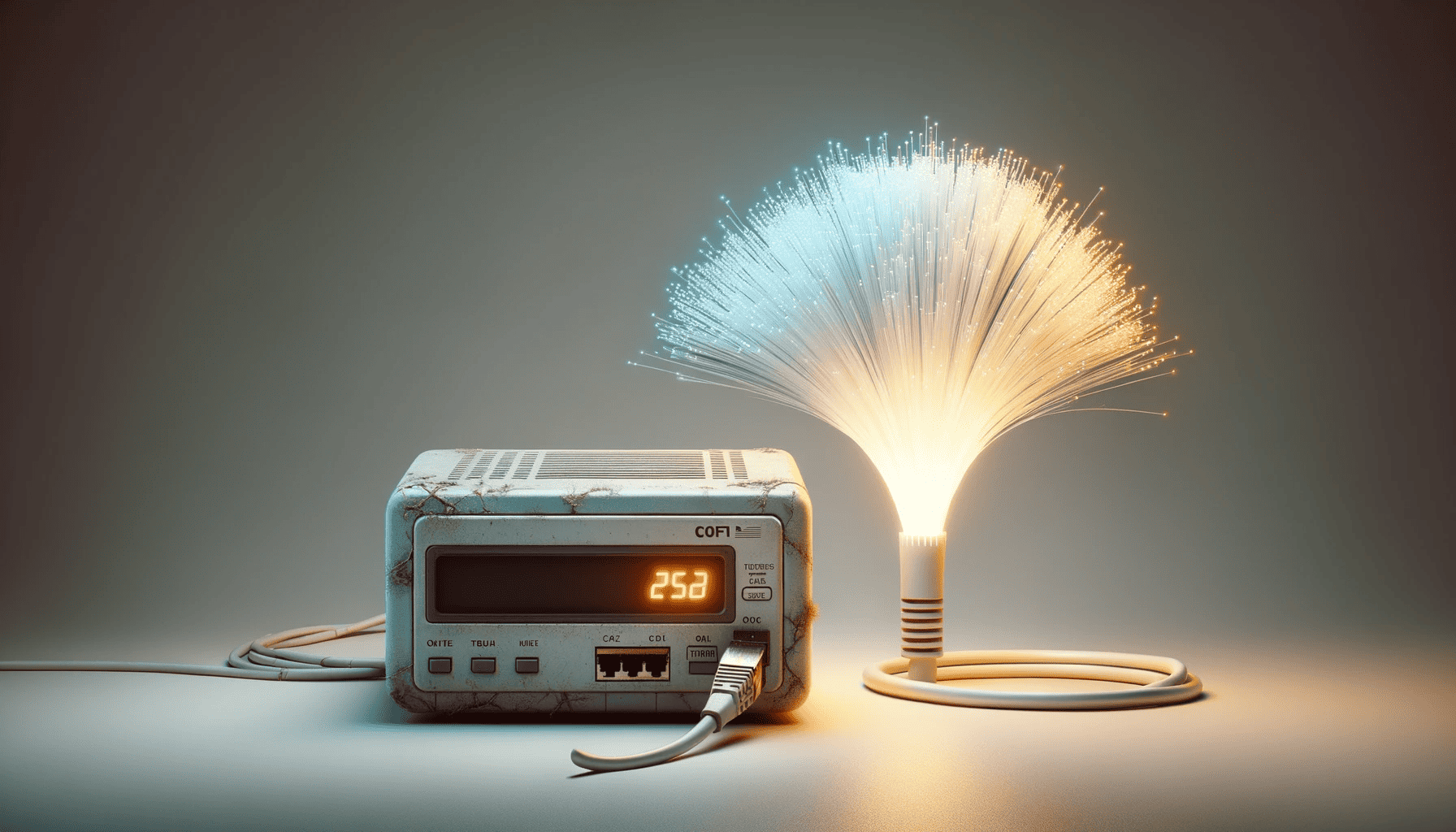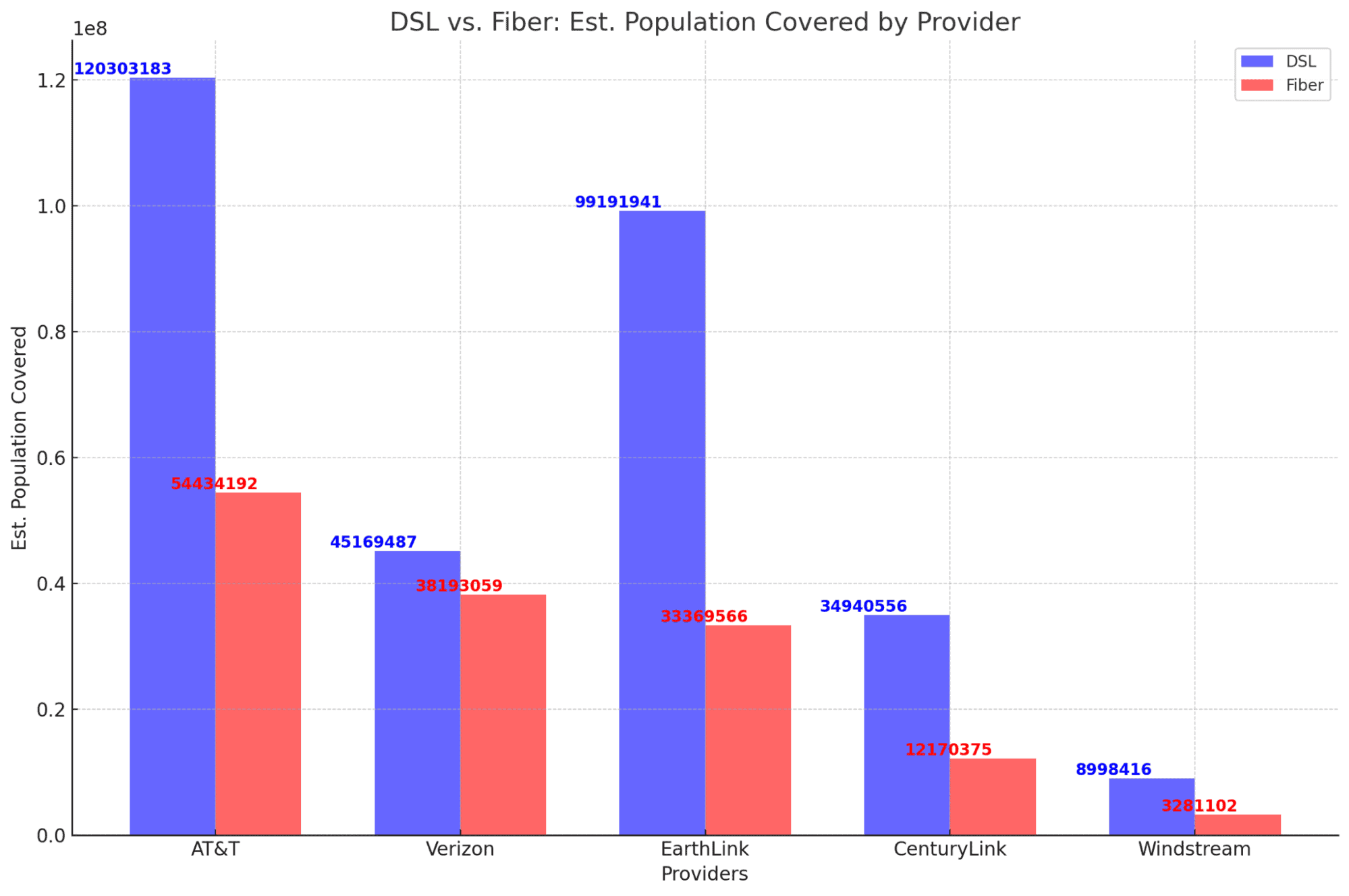
Digital subscriber line (DSL) technology has been a cornerstone of internet access for millions of Americans for decades. However, DSL is becoming increasingly obsolete as technology advances, leaving those who still rely on it in a precarious situation. The question we must ask is: What will happen to the millions of Americans who still depend on a connection that won’t exist much longer?
Key Takeaways
- DSL technology, a primary means of internet access for millions of Americans for decades, is becoming obsolete. DSL is being phased out as technology advances with options like fiber optic and 5G.
- The decline of DSL accentuates the existing digital divide. While major providers are transitioning from DSL to fiber, there’s a disparity in coverage. Many DSL providers still need to achieve parity with their fiber footprints, meaning many Americans might not have immediate access to alternative internet services.
- Addressing the DSL decline requires a comprehensive approach. Internet service providers must either maintain DSL or offer affordable alternatives. Government initiatives, like the BEAD (Broadband Equity, Access, and Deployment) grants, can subsidize the expansion of newer technologies into underserved areas.
The Decline of DSL
DSL was revolutionary when first introduced, offering unimaginable speeds during the era of dial-up connections. But technology has moved on. Today, fiber-optic and 5G technologies are setting new standards for speed and reliability, making DSL look like a relic of the past. Internet service providers are increasingly abandoning DSL in favor of these newer technologies, leading to a gradual phase-out of DSL services.
The writing has, of course, been on the wall for these providers for years. Virtually every major DSL provider in the country has begun to build a fiber network alongside existing copper networks to stay competitive in the new era. Still, this replacement effort takes significant time and capital, and some providers have moved faster than others.
Is AT&T DSL Still Available?
The short answer is no, AT&T DSL is no longer available for purchase. AT&T announced plans to sunset its DSL offerings back in October 2020. Since then, the company has not sold the service, though it has still maintained existing networks and left customers alone.
AT&T plans to wind down the DSL technology altogether, as evidenced by the fact that it has recently begun offering AT&T Internet Air to existing DSL customers. Eventually, the technology will cease operations entirely, but when that day comes, will everyone still relying on their connection have an alternative available?
The Current DSL User Base
So, who are the people still using DSL? The answer is more complex than you might think. DSL is often the only option in rural communities where internet providers haven’t developed the infrastructure for newer technologies. Lower-income households in urban areas may also rely on DSL as a more affordable alternative to faster but more expensive options. For these communities, DSL isn’t just a choice; it’s a necessity.
The decline of DSL has severe implications for the millions who rely on it. The digital divide is not a new issue, but the end of DSL has the potential to widen this gap in areas where alternatives simply do not exist.
The table below shows the top five DSL providers currently operating in the U.S.
| DSL provider | Est. population covered | States |
|---|---|---|
| AT&T Internet | 120,303,183 | 21 |
| EarthLink | 99,191,941 | 26 |
| Verizon High Speed Internet | 45,169,487 | 13 |
| CenturyLink | 34,940,556 | 20 |
| Windstream | 8,998,416 | 18 |
Every one of these providers has been winding down DSL coverage for years, slowly replacing the aging copper technology with fiber lines. However, it is unlikely that these providers will be able to replace 100 percent of these connections with fiber, meaning that many Americans will be forced to switch providers — if they’re lucky enough to have an alternative.
Let’s compare the table above to this one of the top five fiber providers in the U.S.
| Fiber provider | Est. population covered | States |
|---|---|---|
| AT&T Fiber | 54,434,192 | 21 |
| Verizon Fios | 38,193,059 | 26 |
| EarthLink Fiber | 33,369,566 | 13 |
| Frontier | 16,179,905 | 20 |
| CenturyLink Fiber Gigabit | 12,170,375 | 18 |
As you may have noticed, significant overlap exists between the top DSL and top fiber providers in the U.S. Windstream also has a major fiber presence, serving an estimated 3,281,102 Americans.
The below graph is an easier way to visualize just how much disparity there is between DSL and fiber access in the U.S. per provider.

While Verizon has almost caught up to its copper footprint, many of the top DSL providers have yet to approach parity with their fiber footprints, and this presents an issue for millions of Americans still relying on that technology to go online. For instance, less than half of AT&T DSL customers have access to its fiber infrastructure.
While fiber is the best option for replacing these obsolete connections, it isn’t the only one being used; 5G and fixed wireless internet are also likely to play a large part in keeping DSL-reliant Americans online once the technology finally disappears. The irony, of course, is that these still rely on some sort of fiber connection to provide the necessary bandwidth to serve a given community. In many ways, a fiber-driven future is inevitable.
A Post-DSL World: The Proactive Approach
Addressing this issue requires a multi-pronged approach. For now, internet service providers are responsible for maintaining DSL services or offering affordable alternatives. Government initiatives can also play a role, such as subsidizing the expansion of newer technologies into rural areas. Communities can advocate for better services and even explore community-owned broadband networks as a solution.
The BEAD grants (the nation’s most extensive broadband grant program to date) prioritize fiber deployment thanks to speed requirements that largely go above and beyond DSL’s capabilities. Still, some have argued that the 100/20 Mbps requirement the program lays out is not ambitious enough and could pose a risk of setting Americans up for a similar battle years from now when other technologies become obsolete.
Technology Marches Forward
The end of DSL is not just a technological inevitability; it’s a potential crisis in the making for millions of Americans. As we move toward a digital future, we cannot afford to leave anyone behind. Reflecting on the past two decades, we can anticipate that broadband demand will only increase, with homes in the future utilizing vastly more broadband than they do currently.
Technology constantly improves over time. We replace our phones, laptops, and even our vehicles as new, more advanced versions come around. The same is true of our broadband connections, but with one key difference: Many of us have only one option for going online. When that gets taken away, what happens? Only time will tell.
